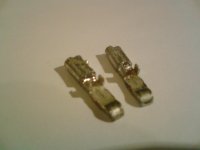auraslip said:
Andersons are nicer for lower powered bikes...
Or rather, PP45 style Andersons....

There are better Andersons for the higher currents. Powerchairs (which can have very high startup currents, I've seen sometimes over 100A momentarily, and 40-75A sustained depending on conditions/load) often use SB50 and PP75 Andersons, with no problems. I prefer these larger ones, and if I had enough of them I'd use them for all power connections (but mine are all salvaged off other things, so my supply is very limited).
Honestly the biggest problem I see with reported problems on the PP45s is not the connector itself, but too-large a wire/insulation being used with it that prevents the contact from floating properly in it's housing, as well as the larger wire not bending very well, and overriding the spring force in the housing, causing non-flat mating.
Another issue is improper crimping that bends the contacts vs the crimped area, and causes the same problem--lack of proper floating in the housing. If it floats correctly, the spring in the housing will help it mate flat, and it won't have the problems it does when it doesn't seat flat against the mated contact surface.
Bullets don't have this type of problem, but if you mate/umate them a lot, they can become unstressed and no longer clip properly, depending on how they are made. I haven't used the type you are using there, so those may not have this issue, if they're made of the right metals and designed/made right. Bullets are probably easier for the first-time connector-installer to get right than PP45 Andersons, though.



